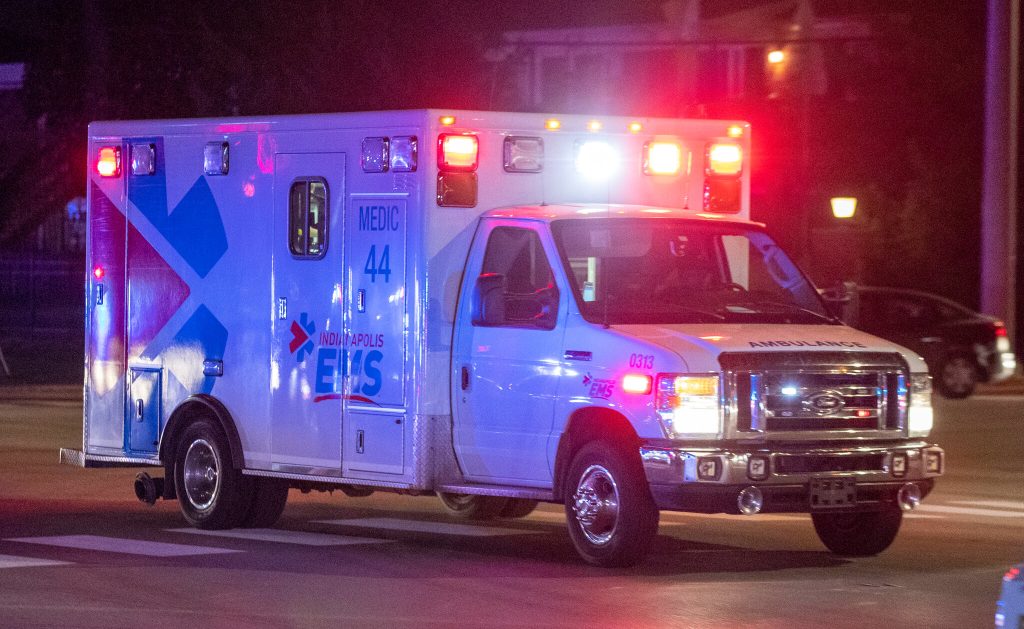Lights & Sirens
Published (updated: ).

TITLE 40 – MOTOR VEHICLES AND TRAFFIC
CHAPTER 6 – UNIFORM RULES OF THE ROAD
ARTICLE 1 – GENERAL PROVISIONS
§ 40-6-6 – Authorized emergency vehicles
(a) The driver of an authorized emergency vehicle or law enforcement vehicle, when responding to an emergency call, when in the pursuit of an actual or suspected violator of the law, or when responding to but not upon returning from a fire alarm, may exercise the privileges set forth in this Code section.
(b) The driver of an authorized emergency vehicle or law enforcement vehicle may:
(1) Park or stand, irrespective of the provisions of this chapter;
(2) Proceed past a red or stop signal or stop sign, but only after slowing down as may be necessary for safe operation;
(3) Exceed the maximum speed limits so long as he or she does not endanger life or property; and
(4) Disregard regulations governing direction of movement or turning in specified directions.
(c) The exceptions granted by this Code section to an authorized emergency vehicle shall apply only when such vehicle is making use of an audible signal and use of a flashing or revolving red light visible under normal atmospheric conditions from a distance of 500 feet to the front of such vehicle, except that a vehicle belonging to a federal, state, or local law enforcement agency and operated as such shall be making use of an audible signal and a flashing or revolving blue light with the same visibility to the front of the vehicle.
(d)(1) The foregoing provisions shall not relieve the driver of an authorized emergency vehicle from the duty to drive with due regard for the safety of all persons.(2) When a law enforcement officer in a law enforcement vehicle is pursuing a fleeing suspect in another vehicle and the fleeing suspect damages any property or injures or kills any person during the pursuit, the law enforcement officer’s pursuit shall not be the proximate cause or a contributing proximate cause of the damage, injury, or death caused by the fleeing suspect unless the law enforcement officer acted with reckless disregard for proper law enforcement procedures in the officer’s decision to initiate or continue the pursuit. Where such reckless disregard exists, the pursuit may be found to constitute a proximate cause of the damage, injury, or death caused by the fleeing suspect, but the existence of such reckless disregard shall not in and of itself establish causation.
(3) The provisions of this subsection shall apply only to issues of causation and duty and shall not affect the existence or absence of immunity which shall be determined as otherwise provided by law.
(4) Claims arising out of this subsection which are brought against local government entities, their officers, agents, servants, attorneys, and employees shall be subject to the procedures and limitations contained in Chapter 92 of Title 36.
(e) It shall be unlawful for any person to operate an authorized emergency vehicle with flashing lights other than as authorized by subsection (c) of this Code section.
If the medics were smart, they would operate their ambulances in a lawful manner. What would happen if the medics were in violation of some part of this law an accident occurred? The ambulance crew could be cited in the accident, making the accident the fault of the driver of the ambulance. After reading O.C.G.A 40-6-6 above, the reader should understand the following:
- The ambulance can use lights and sirens if they are enroute to a call. The call does not necessarily have to be an emergency call, but there must be a patient (or possible patient) at their destination.
- If the ambulance is using lights, sirens must also be used. If the siren is being used, the lights must also be used.
- The ambulance must be certified as an ambulance in Georgia (or in some cases another state).
- The law doesn’t really specify how many miles over the speed limit is allowable, but it does use the term ‘with due regard for safety’. Ambulances are not race cars, they don’t slow down or corner very well.
- The law doesn’t exactly specify whether the call is an emergency call or not for the emergency lights and siren to be used. It also doesn’t say ambulances must respond to calls with lights and sirens. Is it really worth the risk to drive across town with lights and sirens to pick up a dialysis patient or a patient who tripped on a wet floor at a convenience store? It doesn’t make sense to take unnecessary risks with ambulance responses.
